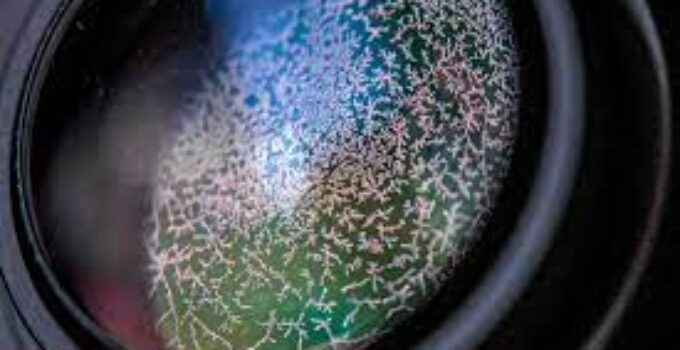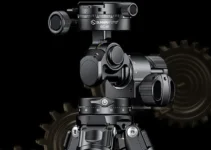Can fungus affect everything in my camera bag? Imagine reaching for your favorite lens only to find it covered in a mysterious, unwanted growth.
Is this a real concern for photographers?
Yes, fungus can invade every item in your camera bag, from lenses to the camera body itself.
This article delves into how fungus spreads, the conditions that promote its growth, and how you can protect your gear.
Protecting your valuable equipment from fungus is crucial. Ready to learn how to keep your camera bag fungus-free and safeguard your photography tools? Let’s dive into the essentials!
Here how to make a small camera bag.
Can fungus affect everything in my camera bag?
Yes, fungus can affect almost everything in your camera bag. Humid and warm conditions create an ideal environment for fungal growth.
Lenses are particularly vulnerable; fungus can grow on the glass elements, causing permanent damage that can degrade image quality.
Camera bodies, especially if not sealed, can also be affected.
Fungus can grow inside the viewfinder, on the sensor, and in the battery compartment, potentially causing electrical problems. Even accessories like filters, memory cards, and straps can be compromised.
Fabric items, such as camera bags and pouches, can develop mold, which can then spread to your gear.
To prevent fungal growth, store your camera equipment in a dry, cool environment, use silica gel packets to absorb moisture, and regularly inspect and clean your gear.
Here, how to make a wheeled rolling camera bag.
Can fungus affect the camera?
Yes, fungus can affect your camera significantly. It thrives in warm, humid conditions and can infiltrate various parts of the camera.
The most vulnerable areas are the lenses, where fungus can grow on the glass elements, causing etching and cloudiness that degrades image quality.

If left untreated, the damage can become irreversible. The camera body itself can also be affected, particularly in areas like the viewfinder, sensor, and internal electronics.
Fungus can lead to malfunctions, including electrical issues, and can spread to other components.
Additionally, it can grow on the rubber seals and grips, causing them to deteriorate over time.
To prevent fungal growth, store your camera in a dry, cool place, use silica gel packets to control humidity, and ensure your equipment is clean and dry before storage.
Regular maintenance and inspection are key to keeping your camera fungus-free.
How to remove fungus from camera bag?
Removing fungus from a camera bag involves a few careful steps.
First, empty the bag and brush off any loose mold or mildew outdoors to prevent spreading spores inside your home.
Use a vacuum with a HEPA filter to remove any remaining spores from the bag’s interior.
Next, mix a solution of equal parts water and white vinegar, which is effective in killing mold.
Here, how to make a spy camera bag.
Use a clean cloth or sponge to wipe down all surfaces of the bag, paying special attention to seams and pockets.
After cleaning, allow the bag to air dry completely in a well-ventilated area, preferably in direct sunlight, as UV rays can help kill remaining spores.
For persistent mold, you may need to use a commercial mold remover or repeat the vinegar treatment.
Finally, consider storing your bag with silica gel packets to prevent future fungal growth. Regularly inspect and clean your bag to maintain its condition.
How to keep a camera safe from fungus?
How do you clean camera fungus?
Cleaning fungus from a camera requires careful handling:
- Disassemble: If comfortable, disassemble the affected parts of the camera, particularly the lens.
- Use Alcohol: Dampen a microfiber cloth or cotton swab with isopropyl alcohol (at least 70%). Gently wipe the affected areas, focusing on the glass elements and internal parts.
- UV Exposure: After cleaning, expose the disassembled parts to direct sunlight for a few hours. UV rays help kill remaining fungal spores.
- Professional Cleaning: For stubborn fungus or internal contamination, seek professional cleaning services. Disassembling delicate components like the sensor or internal lens elements can be risky without expertise.
- Prevent Recurrence: Ensure all parts are completely dry before reassembly. Store your camera in a dry, ventilated area with silica gel packets to prevent future fungal growth.
Regular maintenance and prompt attention to fungal growth can protect your camera from permanent damage.
Camera lens fungus, would the camera bag be a carrier?
Can a lens with fungus contaminate other lenses?
Can fungus go from one lens to another through a camera body?
Yes, fungus can potentially transfer from one lens to another through a camera body.
Fungal spores can spread via the camera’s internal components, especially if the contaminated lens has been used extensively on the camera.
When you attach an infected lens, spores can settle inside the camera body, and when you switch to a different lens, these spores can transfer, leading to contamination of the new lens.
To prevent this, follow these steps:
- Inspect Lenses: Check each lens for fungus before attaching it to your camera.
- Clean Thoroughly: If you suspect contamination, clean the camera body, especially the lens mount area, using a blower and isopropyl alcohol on a microfiber cloth.
- Isolate Affected Lenses: Keep contaminated lenses separate from your clean gear until they are professionally cleaned.
- Regular Maintenance: Maintain a dry, clean environment for storing your camera and lenses to inhibit fungal growth.
By adhering to these practices, you can minimize the risk of fungal transfer between lenses through the camera body.
Lens fungus? What do I do now?
If you discover fungus on your lens, take the following steps:
- Isolate the Lens: Immediately separate the affected lens from your other camera equipment to prevent the spread of fungal spores.
- Inspect and Clean: Gently clean the lens exterior with a microfiber cloth and a small amount of isopropyl alcohol. Avoid opening the lens yourself to prevent further damage.
- Professional Cleaning: Seek a professional camera repair service to clean the internal elements of the lens. They have the tools and expertise to safely remove the fungus without damaging the lens.
- Prevent Future Growth: Store your lenses in a dry, cool environment with silica gel packets to control humidity. Regularly inspect and clean your equipment to catch any issues early.
- Monitor Condition: Keep an eye on the lens after cleaning. If you notice recurring issues, it might be best to consider replacing the lens to avoid ongoing problems.
By following these steps, you can effectively address and manage lens fungus.
Here, how to make a dslr camera bag.
Would you use lenses that were stored with one with fungus?
How much of an issue is fungus?
Would you buy a lens with fungus ?
Is fungus in lenses ‘contagious’?
Yes, fungus in lenses can be considered “contagious” in the sense that fungal spores can spread to other lenses and camera equipment if proper precautions are not taken.

Fungus thrives in warm, humid environments and can easily transfer between surfaces through contact or shared storage spaces.
Here’s how it can be contagious:
- Shared Storage: If a lens with fungus is stored alongside other lenses or camera gear, the spores can spread to nearby surfaces, leading to contamination of additional equipment.
- Direct Contact: When attaching a contaminated lens to a camera body, fungal spores can transfer to the lens mount or internal components, potentially spreading to other lenses used on the same camera.
- Airborne Spores: Fungal spores can become airborne during cleaning or handling of contaminated equipment, leading to potential contamination of nearby surfaces or equipment.
To prevent fungal “contagion,” it’s crucial to isolate and clean any affected lenses promptly, regularly inspect all equipment for signs of fungus, and practice good storage and maintenance habits to minimize the risk of spreading spores.
How bad will the fungus affect my images?
The impact of fungus on your images can vary depending on the severity of the contamination and the specific location of the fungus within the lens.
Generally, fungus can have several negative effects on image quality:
- Loss of Sharpness: Fungus growth on lens elements can cause a reduction in sharpness, leading to softer and less detailed images.
- Reduced Contrast: Fungal haze can diminish contrast, resulting in images that appear flat and lacking in depth.
- Flare and Ghosting: Fungus can create additional reflections and scattering of light within the lens, leading to increased flare and ghosting in images, particularly in backlit scenes.
- Color Shifts: Some types of fungus can cause color shifts or aberrations in images, altering the color rendition and overall color accuracy.
- Overall Image Quality: As fungus progresses, it can progressively degrade image quality, impacting the overall aesthetics and professional appeal of your photographs.
In summary, fungus can significantly affect your images by causing a loss of sharpness, reduced contrast, flare, color shifts, and overall deterioration in image quality.
Regular inspection, proper storage, and timely cleaning are essential to minimize these effects.
Can a camera be affected by fungus?
Will keeping the lens on-camera help protect from dust and fungus?
Why does fungus form in lenses, and how to get rid of it?
Fungus forms in camera lenses due to a combination of factors, primarily moisture and organic matter.
When lenses are exposed to warm and humid environments, such as poorly ventilated storage areas, moisture can accumulate inside the lens.
Dust particles and organic matter, like oils from handling or airborne pollutants, provide nutrients for fungal spores to thrive. Over time, these conditions promote fungal growth on the lens elements.
To get rid of fungus in lenses:
- Professional Cleaning: The most effective method is to have the lens professionally cleaned by a camera repair technician. They have the expertise and tools to disassemble the lens safely and remove the fungus without causing further damage.
- Isolation and Quarantine: If you discover fungus in a lens, immediately isolate it from other lenses and camera equipment to prevent further contamination.
- Prevention: Store your lenses in a dry, cool environment with low humidity. Use desiccants like silica gel packets in your storage containers to absorb moisture and minimize the risk of fungal growth.
Regularly inspecting your lenses and practicing good storage habits can help prevent fungus from forming in the first place.
Should lenses be stored without their caps inside a dry cabinet?
It’s generally recommended to store lenses with their caps on, even when inside a dry cabinet, for several reasons:
- Dust Protection: Lens caps help protect the front and rear elements of the lens from dust, dirt, and debris that can affect image quality and require frequent cleaning.
- Moisture Control: While a dry cabinet helps maintain low humidity levels, using lens caps adds an extra layer of protection against moisture entering the lens during storage.
- Safety: Lens caps provide physical protection to delicate lens elements, reducing the risk of accidental scratches or damage while handling or storing the lenses.
However, if you’re using a high-quality dry cabinet with precise humidity control and minimal dust infiltration, storing lenses without their caps may be acceptable.
In such cases, ensure the cabinet maintains stable humidity levels within the optimal range for lens storage (typically around 35-45% relative humidity).
Regularly inspect lenses for any signs of dust or moisture accumulation, and clean them as needed before use.
Lens Fungus – how to prevent it while actively using the lens in humid environment and remove it if you already have it?
9 prevention from fungus in camera bag
1. Dry Environment and Silica Gel Packs
Keeping your camera bag in a dry environment is crucial to prevent fungus growth.
Fungus thrives in humid conditions, so storing your bag in a cool, dry place can significantly reduce the risk.
Using silica gel packs inside the bag helps absorb any residual moisture, further enhancing the dryness of the environment.
Ensure the silica gel packs are regularly replaced or regenerated according to manufacturer instructions to maintain their effectiveness.
2. Regular Inspection and Cleaning
Regularly inspecting your camera bag for any signs of mold or mildew is essential.
Check all compartments, pockets, and fabric surfaces for moisture buildup or visible fungal growth.
If you notice any issues, promptly clean the affected areas using a mixture of water and white vinegar or a mild detergent.
Ensure the bag is completely dry before storing your gear inside to prevent mold from returning.
3. Proper Ventilation
A well-ventilated camera bag helps prevent moisture buildup, reducing the likelihood of fungus growth.
Ensure your bag has adequate ventilation, such as mesh panels or breathable materials, to allow air circulation.
Avoid sealing your bag completely for extended periods, especially if it contains damp or recently used gear, as this can create a conducive environment for fungus.
4. Avoiding Damp Environments
Keep your camera bag away from damp or humid environments, such as basements, bathrooms, or areas prone to moisture accumulation.
If you’re shooting in wet conditions, ensure your gear is thoroughly dried before storing it in the bag.
Use a waterproof cover or rain sleeve to protect your equipment during outdoor shoots in inclement weather.
5. Separate Clean and Used Gear
Maintain a system of separating clean and used gear within your camera bag.
Designate specific compartments or pouches for clean equipment to prevent cross-contamination.
After each use, wipe down and dry your gear before placing it back into the bag. This helps minimize the transfer of moisture and fungal spores between items.
6. Avoiding Food and Drinks
Refrain from storing food or drinks in your camera bag, as spills or crumbs can introduce moisture and organic matter that promote fungal growth.
Keep your bag dedicated solely to camera equipment to maintain a clean and dry environment conducive to gear protection.
7. Regular Gear Rotation
Rotate your camera gear regularly to prevent items from sitting unused for extended periods.
Fungus is less likely to develop on frequently used equipment that undergoes airflow and regular maintenance.
If certain gear remains unused for an extended period, ensure it’s properly cleaned and aired out before storage.
8. Professional Cleaning and Maintenance
Periodically have your camera bag professionally cleaned and maintained, especially if you’ve encountered mold or mildew issues in the past.
Professional cleaning services can thoroughly disinfect and sanitize your bag, ensuring it’s free from fungal spores and contaminants that could harm your gear.
9. Educate Yourself and Stay Proactive
Stay informed about proper camera gear maintenance and fungal prevention techniques.
Educate yourself on the signs of fungal growth and take proactive measures to address any issues promptly.
Regularly review and update your preventive measures based on environmental changes or new information to ensure the long-term protection of your camera bag and equipment.
Related faq’s
Does lens fungus affect image quality?
How would you know that your DSLR camera lens?
You may notice that your DSLR camera lens has fungus if you observe the following signs:
- Hazy or foggy spots on the lens elements.
- Visible web-like patterns or growth inside the lens.
- Reduced sharpness, contrast, and clarity in images.
- Increased flare or ghosting in photographs.
- Unusual color shifts or aberrations in image rendering.
Regularly inspecting your lens for these signs and promptly addressing any issues can help prevent fungal growth from affecting image quality and prolong the lifespan of your camera equipment.
Does sunlight kill camera lens fungus?
Sunlight can help inhibit the growth of camera lens fungus and may kill some fungal spores due to its ultraviolet (UV) radiation.
However, sunlight alone may not completely eradicate existing fungus or prevent future growth.
It’s important to note that excessive exposure to direct sunlight can also cause heat damage to camera lenses and other components.
Therefore, while sunlight can be beneficial in controlling fungal growth to some extent, it’s advisable to combine sunlight exposure with proper storage practices, regular cleaning, and professional maintenance to effectively manage lens fungus and preserve the integrity of your camera equipment.
Does a mirrorless camera body get fungal spores?
Yes, a mirrorless camera body can potentially get fungal spores, although the likelihood may be lower compared to lenses or other components with glass elements.
Fungal spores can enter the camera body through openings like the lens mount, buttons, or ports, especially if the camera is exposed to humid or moist environments.
While the internal components of a camera body are less susceptible to fungus compared to lenses, it’s still essential to store and handle your mirrorless camera in a dry, clean environment to minimize the risk of fungal contamination and ensure optimal performance and longevity.
Will fungus effect a camera sensor?
Fungus can potentially affect a camera sensor if it manages to infiltrate the camera body and settle on the sensor surface.
However, this scenario is less common compared to fungal growth on lenses due to the sealed nature of camera bodies.
If fungus does reach the sensor, it can cause spots or marks on images, impacting image quality.
Prevention measures like proper storage, regular inspection, and professional cleaning can minimize the risk of fungal contamination reaching the sensor and help maintain the sensor’s performance and image quality.
Conclusion:
Fungus can indeed spread throughout your camera bag, affecting lenses, camera bodies, and accessories.
It thrives in dark, damp environments and can cause irreparable damage to optical elements.
Regular cleaning, proper storage, and maintaining dry conditions are essential to prevent fungus growth and protect your photography equipment.







